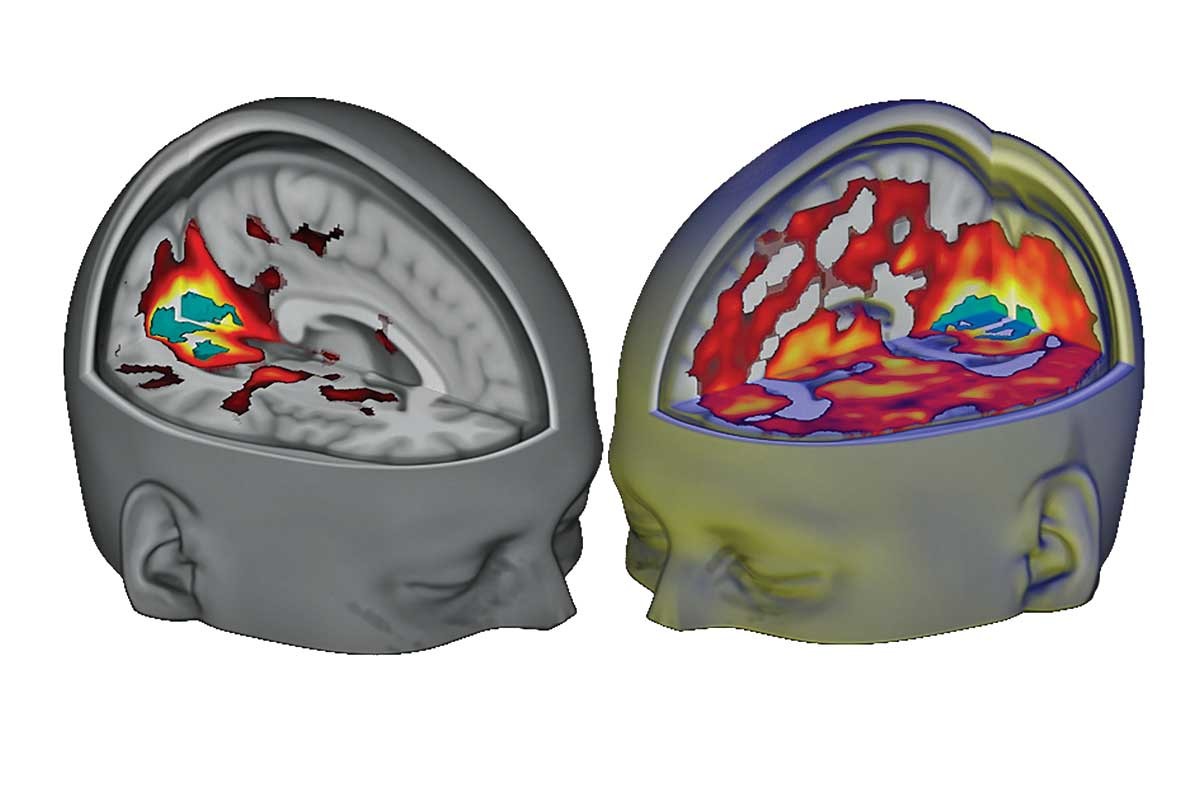
One of the study leaders says "In many ways, the brain in the LSD state resembles the state our brains were in when we were infants: free and unconstrained," without the compartmentalization and rigid thinking that naturally occurs as we age.
A new study involving images of the brain under the influence of LSD has shown exchanges of information between parts of the brain that normally do not communicate, making the brain more “complete.” As seen in the right image above, the visual cortex of the brain shows increased connectivity with other regions of the brain when affected by the drug. Researchers from Imperial College London say the findings help to explain the complex and vivid hallucinations people experience while taking lysergic acid diethylamide.
The results also showed that some important brain networks that normally fire together experienced reduced blood flow, which resulted in a loss of synchronization between neurons that normally fire together. Neuropsychopharmacologist and senior author of the study David Nutt says this correlates with reports of an effect known as “ego dissolution,” the sense a person on LSD has that they are melded with people and things around them, a feeling of “oneness with the universe.”
LSD was studied for possible therapeutic uses before the 1960s, but it was heavily restricted around the world after 1967 because of its potential dangers. Nutt says he finds the hysteria to be “unfounded.” However, in general countries worldwide have concluded that LSD has no medical value. This makes it extremely difficult to work with. However, Nutt told the Nature that he hopes it might ultimately be useful in therapies.
Because of the restrictions it took Nutt and his team 9 months to get approval for the work from a UK ethics committee. United Nations laws do allow academic research on restricted drugs such as LSD, and research is legal in the UK as long as the use of the drug is not therapeutic.
Nutt says this was not a clinical trial. LSD was given to 20 volunteers who had already experienced hallucinogenic drugs. Study participants received infusions on two days, one containing 75 micrograms of LSD and the other containing a placebo. They then had their brains imaged using three different techniques, MRI, MEG and arterial spin labelling, which were used to build a picture of their neural activity and how it occurred both under the effect of the drug and without it.
MRI scans showed less coordinated activity in the parts of the brain that make of the default mode network. The size of the effect on this area correlated with the subject’s rating of ego dissolution, which suggests that this network is responsible for a stable sense of self.
Magnetoencephalography (MEG) imaging showed that alpha brainwave rhythm weakened under LSD, which also correlates with ego dissolution.
However, the images showed that brain more unified in its activity, with parts working together that normally do not. “The brain is functioning in a simpler way,” said Robin Carhart-Harris of Imperial College London.
Carhart-Harris says, “In many ways, the brain in the LSD state resembles the state our brains were in when we were infants: free and unconstrained.” She added that the brain becomes more compartmentalized as humans grow to adulthood, resulting in more rigid thinking.
The research was published in the journal Proceedings of the National Academy of Sciences.
Image from Imperial College London

Leave a Reply